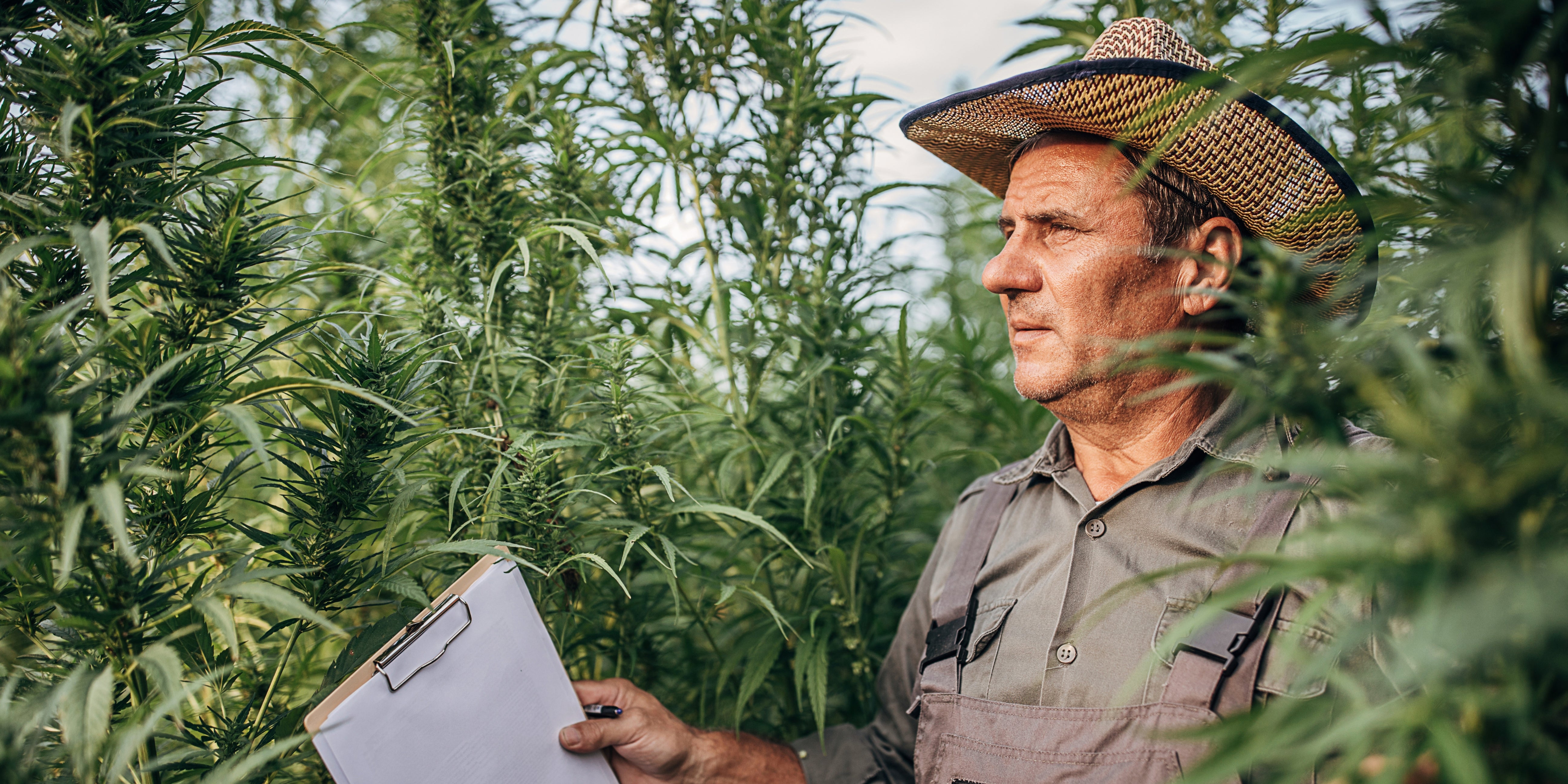Hemp Clothing's Biodegradable Excellence
In the quest for a more sustainable lifestyle, the choices we make about what we wear are increasingly coming under scrutiny. With the fashion industry being one of the major contributors to environmental degradation worldwide, the shift towards sustainable fashion is not just a trend but a necessity. Among the champions of this movement is hemp clothing, a symbol of eco-friendly attire that combines style, sustainability, and skin health benefits into one. Hemp, a crop cultivated for thousands of years for its versatility, is making a remarkable comeback in the realm of fashion, offering a solution to the environmentally destructive practices of conventional textile production.
The allure of hemp clothing lies not just in its environmental credentials but also in its remarkable biodegradability. In a world drowning in textile waste, the ability of hemp clothing to break down naturally and return to the earth without leaving harmful residues is a significant advantage. This article aims to take you through a detailed journey of hemp clothing's path from field to fabric, highlighting its minimal water use, chemical independence, carbon footprint reduction, and, most importantly, its biodegradable excellence. Through this exploration, we hope to illuminate the reasons why hemp clothing is not only an eco-conscious choice but a step towards a more sustainable and health-focused wardrobe.
What is Hemp Clothing?
Hemp clothing is derived from the fibers of the Cannabis sativa plant, a sturdy and fast-growing crop that has been utilised for fabric, food, and building materials for millennia. Unlike its psychoactive counterparts, the hemp used in textile production contains negligible amounts of THC (tetrahydrocannabinol), making it entirely non-intoxicating and focused on industrial use. The process of converting hemp into fabric involves harvesting the stalks, retting (a process that helps to separate the fiber from the inner core), and spinning the fibers into yarn. The result is a durable, breathable, and highly absorbent material that surpasses many traditional textiles in both comfort and environmental impact.
Comparing hemp to conventional textiles highlights its superiority in sustainability. Cotton, for example, has long been the standard in the fashion industry but comes at a high environmental cost, requiring vast amounts of water and pesticides to thrive. Synthetic fibers, while versatile and durable, are petroleum-based, contributing to the depletion of fossil fuels and environmental pollution through microfiber shedding. Hemp, on the other hand, requires significantly less water, grows without the need for chemical pesticides or fertilisers, and enriches the soil it grows in, making it a clear winner for those seeking an eco-friendly textile option.
Environmental Benefits of Hemp Clothing
The cultivation of hemp presents a minimal environmental footprint, setting it apart as a beacon of sustainability in the textile industry. One of the most compelling environmental benefits of hemp is its low water requirement. Unlike cotton, which is notoriously thirsty, hemp can grow with substantially less water, making it an ideal crop for regions prone to drought and water scarcity. This characteristic alone positions hemp as a sustainable alternative in the face of growing global concerns over water use.
Furthermore, hemp's ability to grow in a variety of climates without the need for chemical pesticides or fertilisers not only reduces the harmful impacts of agricultural chemicals on ecosystems but also supports biodiversity. Hemp plants are robust and can naturally resist many pests and diseases, which allows them to be grown closer together and results in higher yields per acre than many other crops. Additionally, hemp cultivation improves soil health through phytoremediation, the process by which the plants detoxify the soil by absorbing pollutants, leaving the land better than they found it.
The Biodegradability of Hemp Clothing
Hemp's biodegradability is a key factor in its environmental excellence. Unlike synthetic fibers that can take hundreds of years to decompose in landfills, releasing harmful chemicals and microplastics into the environment, hemp fabric breaks down naturally. This process not only prevents the accumulation of textile waste but also contributes positively to the soil's health. When hemp clothing eventually reaches the end of its life and is composted, it returns organic matter to the earth, enhancing soil fertility. This cycle of growth and decomposition embodies the principles of a circular economy, where waste is minimised and materials are reused and recycled.
The science behind hemp's biodegradability lies in its natural fibers, which are composed of cellulose. Cellulose is a biodegradable organic polymer that microbes in the soil can easily break down. The decomposition of hemp clothing is a clean process that doesn't leave behind toxic residues, unlike many synthetic fabrics. By choosing hemp clothing, consumers can reduce their environmental footprint and support a more sustainable fashion industry that aligns with the natural cycles of the earth.
Hemp Clothing and Water Conservation
Water conservation is another area where hemp clothing shines. The textile industry is one of the largest consumers of water globally, with traditional cotton production being particularly water-intensive. In contrast, hemp requires significantly less water to grow, making it a more sustainable choice for eco-conscious consumers. This reduced water demand is crucial in areas facing water scarcity and can lead to more sustainable agricultural practices.
Hemp's efficiency in water usage is largely due to its deep root system, which allows the plant to access water stored deeper in the soil. This capability not only reduces the need for artificial irrigation but also helps to stabilise the soil and prevent erosion. By cultivating hemp instead of more water-demanding crops, farmers can conserve water resources and contribute to the health of the local ecosystem. For the consumer, choosing hemp clothing means supporting practices that are in harmony with preserving our planet's water supply.
Durability and Longevity of Hemp Fabric
One of the most appreciated qualities of hemp fabric is its durability and longevity. Hemp fibers are among the strongest natural fibers known to man, resulting in clothing that can withstand wear and tear much better than many other materials. This strength does not compromise comfort, however, as hemp softens with each wash and wear, becoming more comfortable over time without losing its integrity. This attribute significantly extends the life of hemp garments, reducing the need for frequent replacements and, consequently, the volume of clothing waste.
The longevity of hemp clothing is not just a matter of economic value but also a testament to its sustainable nature. In a world where fast fashion has led to an unsustainable cycle of consumption and disposal, choosing durable materials like hemp is a step towards reducing the environmental impact of our wardrobes. Furthermore, the care required for hemp clothing is relatively simple, without the need for harsh chemicals or special treatments, which further reduces its environmental impact over its lifecycle.
Hemp's Role in Reducing Fashion Waste
The global fashion industry is a significant contributor to the world's growing waste problem, with millions of tons of textiles ending up in landfills each year. Fast fashion, characterised by cheap production and rapid consumption, exacerbates this issue, leading to an unsustainable cycle of waste. Hemp clothing offers a sustainable alternative, helping to reduce fashion waste through its durability and biodegradability. Clothes made from hemp do not just last longer, reducing the need for frequent replacements; they also contribute less to landfill mass at the end of their life cycle due to their natural decomposability.
Moreover, the growing awareness and demand for sustainable fashion are encouraging consumers to seek out eco-friendly materials like hemp. By opting for hemp clothing, individuals can make a direct impact on reducing their environmental footprint. The shift towards sustainable materials in the fashion industry not only promotes the use of eco-friendly fabrics but also encourages the adoption of circular fashion principles. These principles advocate for the reuse, recycling, and repurposing of clothing, further reducing the environmental impact of the fashion industry.
Innovations in Hemp Textile Production
The hemp textile industry has seen significant advancements in recent years, driven by a renewed interest in sustainable fashion and technological innovations. These advancements have made hemp fabric softer, more versatile, and more appealing to a broader audience. Modern processing techniques have improved the quality and texture of hemp fibers, making them suitable for a wide range of apparel, from casual wear to high-end fashion. This has helped to overcome one of the traditional hurdles to hemp's widespread adoption: its previously coarse and rough texture.
In addition to improvements in fabric quality, there are also innovations in dyeing and finishing processes that are environmentally friendly and enhance the fabric's appeal. These eco-friendly processes use less water and non-toxic dyes, aligning with the sustainable nature of hemp clothing. Furthermore, research into blending hemp with other sustainable fibers, like organic cotton and bamboo, has led to the development of new fabric blends that combine the best qualities of each material. These innovations not only expand the applications of hemp in the textile industry but also contribute to a more sustainable and eco-conscious fashion market.
How to Incorporate Hemp Clothing into Your Wardrobe
Adopting hemp clothing into your wardrobe is a straightforward and impactful way to contribute to environmental sustainability. Start by identifying staple pieces that you can easily integrate with your existing wardrobe, such as t-shirts, jeans, or jackets. Hemp clothing comes in a variety of styles and designs, making it easy to find pieces that reflect your personal style while being eco-friendly. Additionally, look for certified organic hemp products to ensure that the clothing has been produced without harmful chemicals or pesticides, further enhancing its environmental benefits.
Educating yourself on the care and maintenance of hemp clothing can also help maximise its lifespan and sustainability. Hemp fabric is known for its durability, but proper care can extend its life even further. Washing hemp clothing in cold water, using gentle, eco-friendly detergents, and air-drying can help preserve the fabric's quality and reduce energy consumption. By making mindful choices about the clothes we buy and how we care for them, we can make a significant impact on reducing our environmental footprint.
Summary
Sustainability of Hemp Clothing:
- Hemp requires significantly less water and no chemical pesticides or fertilisers to grow compared to conventional textiles like cotton, making it an environmentally friendly option.
- Hemp's deep root system helps to prevent soil erosion and improves soil health through phytoremediation.
Biodegradability:
- Hemp clothing is naturally biodegradable, decomposing into the soil without leaving toxic residues, unlike synthetic fibers that contribute to microplastic pollution.
Water Conservation:
- Hemp's low water requirement for cultivation conserves vital water resources, offering a sustainable alternative especially in water-scarce regions.
Durability and Longevity:
- Hemp fibers are among the strongest natural fibers, resulting in durable clothing that softens with use without losing strength, extending the lifespan of garments and reducing waste.
Reducing Fashion Waste:
- The durability and biodegradability of hemp clothing contribute to reducing the environmental impact of the fashion industry by minimising textile waste in landfills.
Innovations in Hemp Textile Production:
- Technological advancements have made hemp fabric softer and more versatile, expanding its use in a wide range of apparel and making it more appealing to consumers.
- Eco-friendly dyeing and finishing processes have improved the environmental footprint of hemp clothing production.
Incorporating Hemp into Your Wardrobe:
- Choosing staple pieces and caring for them properly can integrate sustainable fashion into everyday life, reducing the overall environmental footprint.



Leave a comment